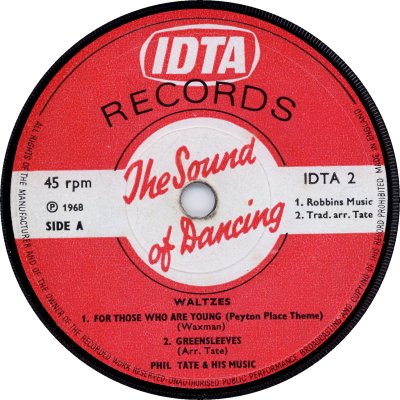
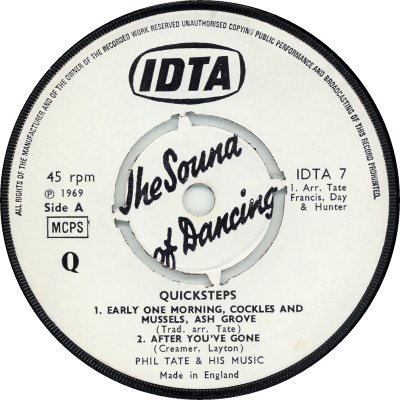
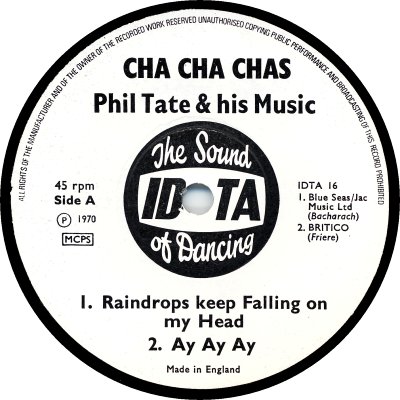

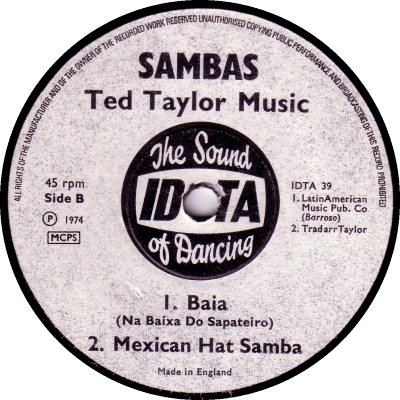
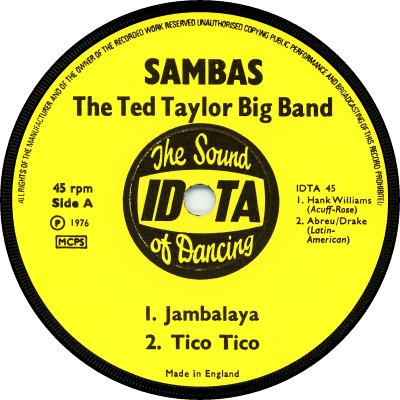

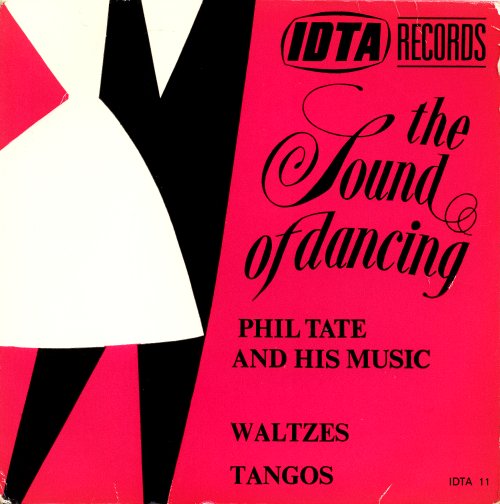


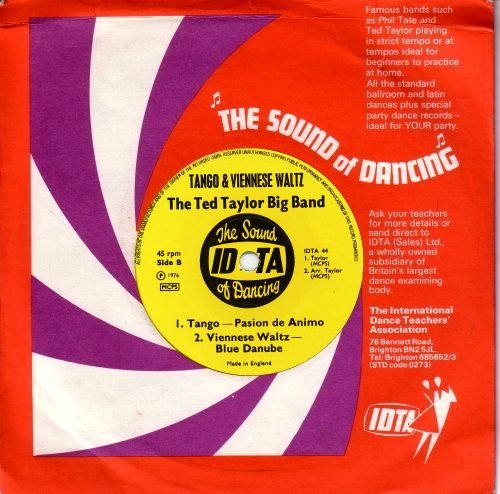
IDTA was the record label of the International Dance Teachers' Association, which until 1970 was based in North End Road, London; it then moved to Bennett Road, Brighton. From 1968 into the early 1980s it issued a series of Strict Tempo EPs, aimed squarely at the Ballroom Dancing market. They were numbered in the IDTA-0s, and they eventually reached IDTA-62. Three different label designs were used. The red-and-white one (1) seems to have been the first; around the end of 1970 it lost the red and the word 'Records' under the logo, though it gained the initial of the dance at 8 o'clock (2). The third design, which appears to have first come into use early in 1972, kept the white colour, but the logo and the 'The Sound Of Dancing' byline moved to the centre (3). Finally, around the start of 1976, the white turned to yellow (6). In 1978 the size of the font that was used for the dance types and the artists' names was reduced in size (7). It is common to find given IDTA singles with different labels - presumably they were on catalogue for years and were re-pressed every so often using the labels that were then current. Occasionally the dates on re-pressings were altered, as is the case with IDTA-18 above (7): earlier pressings had the white label and were dated 1971, whereas that copy has 1977 on it.
There were four kinds of company sleeve, the solid sleeves being used, with different details, for different records. The 'Dancers' design (8) in red or sometimes pink seems to have lasted into 1972. It was succeeded first by a green-and-white design (9) - thanks to Nicholas Hough for that scan - and then by a purple-and-white one (10). The die-cut 'swirl' type (11) was the last. Thanks to the many re-pressings, different sleeves can be found on records of the same catalogue number. IDTA handled their own distribution, via their Sales department. Manufacture was by CBS for the first three years, and again in 1976-77; IDTA also used British Homophone, in 1971-73. The British Homophones sometimes have three-pronged dinking perforations (4), and labels with a rather grainy appearance (5) also appear to be British Homophone pressings. I haven't seen enough IDTA EPs outside those periods to be able to tell who pressed them. The series of EPs appeared to have come to an end in 1979, but a final four were issued in 1983, all of them by Pepe Jaramillo - the material on these appears to have been licensed from EMI rather than recorded by IDTA themselves. Until that point the tracks had been recorded by mainly bands led by Phil Tait or Ted Taylor, though Victor Sylvester contributed four EPs' worth in 1979. A block of numbers in the IDTA-20s and 30s seem to have been reserved for Ballet records by Joan Hall; there is a conflict of dates on the labels, with some of the lower-numbered ones having later years on them. There were quite a few Ballroom Dancing labels around in the '70s: see also Dancetime, Dansan, Emcee, Je Mar, NDS, Silver Dollar, and Sydney Thompson.



Copyright 2006 Robert Lyons.

